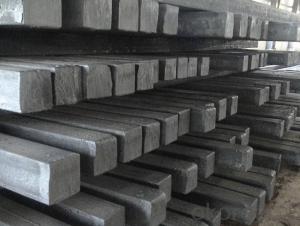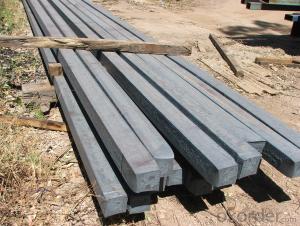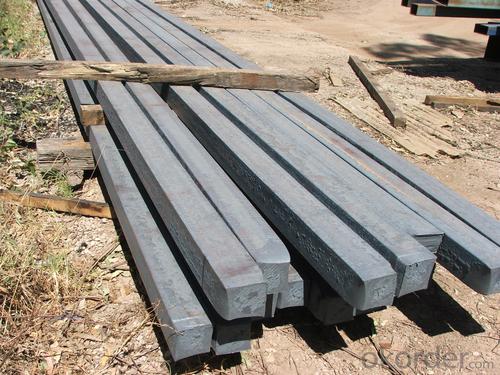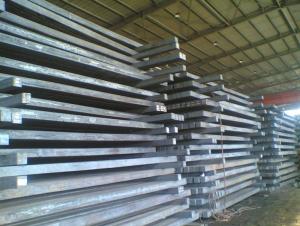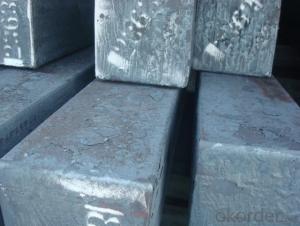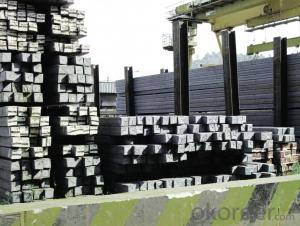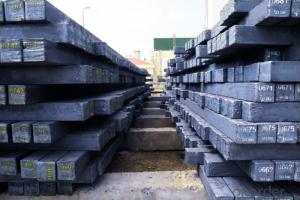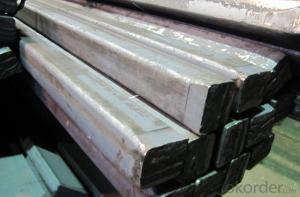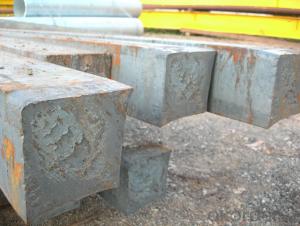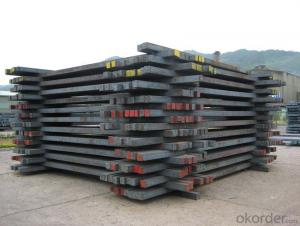Prime Q275 170mm Square Alloy Steel Billet
- Loading Port:
- Shanghai
- Payment Terms:
- TT OR LC
- Min Order Qty:
- 100 m.t.
- Supply Capability:
- 10000 m.t./month
OKorder Service Pledge
OKorder Financial Service
You Might Also Like
Structure of Prime Q275 170mm Square Alloy Steel Billet
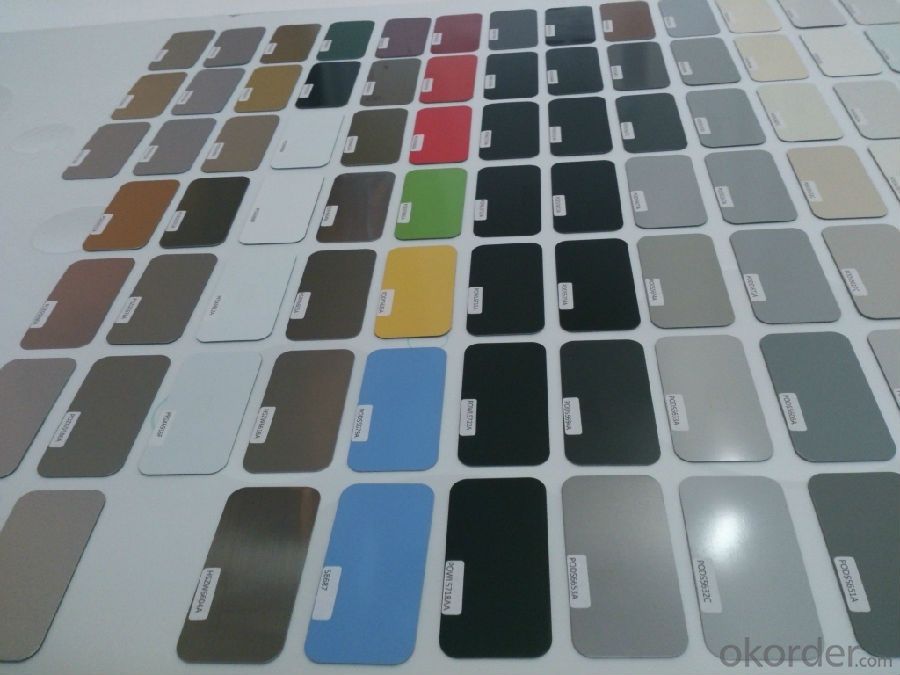
Description of Prime Q275 170mm Square Alloy Steel Billet
1. Prepainted steel coil is coated with organic layer, which provides higher anti-corrosion property and a longer lifespan than that of galvanized or galvalume steel sheets.
2. The base metals for prepainted steel coil consist of cold rolled, HDGI Steel, electro-galvanized and hot-dip alu-zinc coated steel. The finish coats of prepainted steel coil can be classified into groups as follows: polyester, silicon modified polyesters, polyvinylidene fluoride, high-durability polyester, etc.
3. The production process has evolved from one-coating-and-one-baking to double-coating-and-double-baking, and even three-coating-and-three-baking.
4. The color of the prepainted steel coil has a very wide selection, like orange, cream-colored, dark sky blue, sea blue, bright red, brick red, ivory white, porcelain blue, etc.
5. The prepainted steel coils can also be classified into groups by their surface textures, namely regular prepainted sheets, embossed sheets and printed sheets.

Main Feature of Prime Q275 170mm Square Alloy Steel Billet
They were one of several reasons for the wind to be taken out of the sails of the recent oil price momentum. Kuwait’s oil minister said that his country would only commit to a production freeze if all major producers are involved, including Iran. We also had Goldman telling us that oil markets will not rebalance at $40/bbl as it throws a lifeline to cash-strapped US producers.
If it is talk of a production freeze that is behind the rally it shows how low expectations have fallen. It is in the nature of oil people to talk the market up. Any bullish crumb is given exaggerated significance and any port in a storm will do. It is all but fact that the oil market will be tighter in the second half of this year when seasonal demand shoots up and US production continues to decline. It was the same picture last year. If OPEC and key non-OPEC production is frozen that will ensure the daily surplus will fall, but in all likelihood there will still be a surplus and there is an enormous global stockbuild to burn off.
Applications of Prime Q275 170mm Square Alloy Steel Billet
A. Corrugated design makes it excellent waterproof performance
B. Materials as prepainted steel sheets, galvanized steel sheets, galvalume (Al-Zn coated sheets) are available to make corrugated sheet.
C.Those material are durable, anti-corrosion in bad weather for 20-30 years based on it's Zinc(Galvanized) coating or AZ (Galvalume) coating.
D. Different shape of the sheet make it suitable for any style of buildings.
E.Easy to install, no need special tools to fix the sheet.
F.Light weight due to high strength to weight ratio of steel. Light weight means easier handling lower shipping costs, easier installation
G. Different color is availbe base on the RAL Standard make your building more beautiful.
H. We will provide the best solutions if you don't have a exact idea of the specification you want for the steel sheet based on your weather conditions, engineering structure, construction budget and so on.
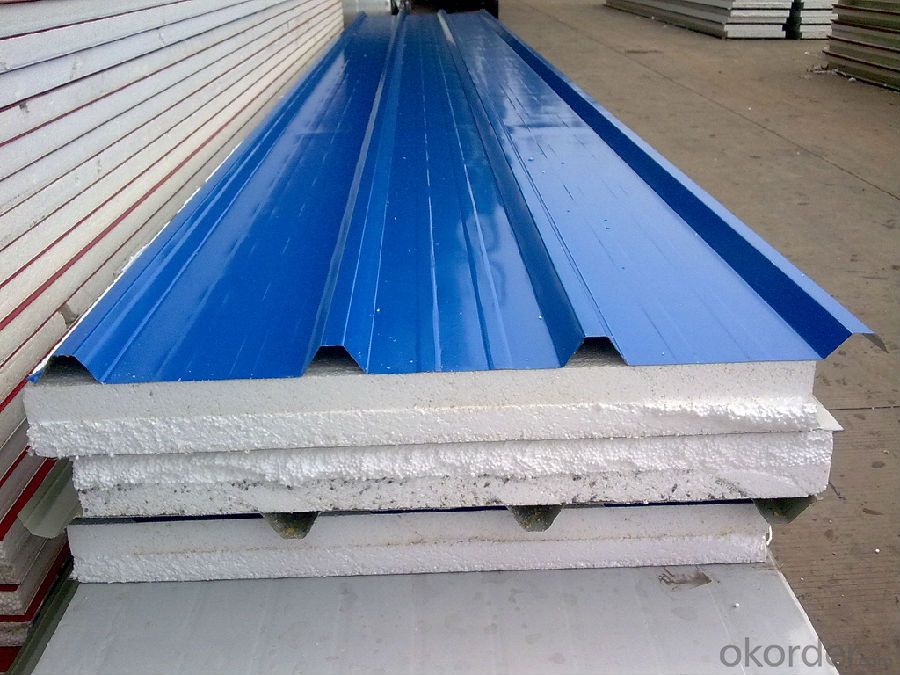
Specifications of Prime Q275 170mm Square Alloy Steel Billet
Product | Billet |
Material Grade | SGCC / SGCH / DX51D+AZ, etc |
Thickness | 0.6-3.0mm |
Width | 500-1500mm |
Tolerance | Thickness: +/-0.02mm , Width:+/-2mm |
Zinc-coating | Z30-150g/m2 |
Technique | Raw material: Hot rolled steel coil --> Cold rolled_>hot dipped galvalume |
Surface | Dried, Chromated, Unoiled |
Spangle | Regular spangle , small spangle, zero spangle |
ID | 508MM 610MM |
Coil weight | 1-25MT |
Export package | Cardboard inner sleeves, Waterproof paper, galvanized steel covered and steel strip packed |
FAQ of Prime Q275 170mm Square Alloy Steel Billet
We have organized several common questions for our clients,may help you sincerely:
1. How Can I Visit There?
Our company is located in Tianjin City, China, near Beijing. You can fly to Tianjin Airport Directly. All our clients, from home or aboard, are warmly welcome to visit us!
2. How Can I Get Some Sample?
Poor trade figures from China punctured commodity optimism yesterday although they came with warnings that perhaps the numbers were distorted by Chinese New Year celebrations and we will have to wait for the March figures to gain a true picture of the state of China’s landing. Exports for February were -25.4% and imports -13.8% year-on-year.
- Q: How do steel billets contribute to the overall thermal insulation of a structure?
- The overall thermal insulation of a structure is not directly influenced by steel billets. Instead, materials with low thermal conductivity, such as insulation boards or panels made from materials like fiberglass, foam, or mineral wool, are primarily used to achieve thermal insulation. On the other hand, steel billets are commonly utilized as a raw material in the construction industry for various purposes in the production of steel beams, columns, and other structural components. These components indirectly contribute to the thermal insulation of a structure when integrated correctly. For example, steel beams and columns play a crucial role in supporting and distributing the load of insulation materials, ensuring their effective performance. Moreover, steel components can be designed in a way that minimizes thermal bridging, which occurs when heat is transferred between materials with different thermal conductivities. By minimizing thermal bridging, steel components help maintain a consistent temperature throughout the structure and prevent heat loss or gain at these junctions. However, it is important to recognize that the primary function of steel billets in a structure is not thermal insulation. Instead, they provide structural stability, durability, and strength to the building. To achieve optimal thermal insulation, additional materials and construction techniques specifically designed for insulation purposes should be used alongside steel components.
- Q: What are the potential applications of steel billets in the chemical aftermarket?
- Steel billets have a wide range of potential applications in the chemical aftermarket. One of the key uses of steel billets is in the production of various chemical processing equipment. These billets can be used to manufacture reactors, heat exchangers, columns, and other critical components that are used in chemical plants. Furthermore, steel billets are also utilized in the construction of storage tanks for storing chemicals. These tanks need to be strong, durable, and resistant to corrosion, and steel billets provide the necessary properties to meet these requirements. In addition, steel billets find applications in the fabrication of pipelines and piping systems used for transporting chemicals. The high strength and resistance to temperature and pressure make steel billets an ideal choice for constructing pipelines that can handle corrosive and hazardous chemicals. Moreover, steel billets can be shaped and formed into various fittings and flanges that are essential components in chemical systems. These fittings and flanges are used to connect different sections of piping, valves, and other equipment, ensuring a secure and leak-free operation. Overall, the potential applications of steel billets in the chemical aftermarket are vast and diverse. From manufacturing chemical processing equipment to constructing storage tanks, pipelines, and fittings, steel billets play a crucial role in ensuring the safe and efficient operation of chemical facilities.
- Q: What are the common defects in steel billets during continuous casting?
- Some common defects that can occur in steel billets during continuous casting include: 1. Surface cracks: These are cracks that appear on the outer surface of the billet. They can be caused by excessive cooling or improper mold lubrication. Surface cracks can lead to weakened structural integrity and may result in breakage during subsequent processing. 2. Central segregation: This defect occurs when there is an uneven distribution of elements within the billet, leading to variations in composition across its cross-section. Central segregation can result in inconsistent mechanical properties, making the billet unsuitable for certain applications. 3. Inclusion defects: Inclusions are non-metallic particles or impurities that become trapped within the billet during casting. They can originate from the refractory lining, mold powder, or the steelmaking process itself. Inclusion defects can weaken the material and reduce its overall quality. 4. Internal cracks: These cracks occur within the body of the billet and are often caused by thermal stresses or improper cooling. Internal cracks are difficult to detect visually and can compromise the billet's structural integrity. 5. Surface and subsurface defects: These defects include surface depressions, oscillation marks, and hot tears. Surface depressions can be caused by excessive mold oscillation or improper mold condition. Oscillation marks result from non-uniform mold oscillation, leading to uneven cooling and inconsistent billet dimensions. Hot tears occur when the billet contracts unevenly during solidification, resulting in cracks on the surface or subsurface. 6. Pipe defects: Pipes are hollow cavities that can form within the billet during solidification. They are caused by shrinkage and can result in weak points in the material. Pipes can be particularly problematic if they propagate to the surface, as they can lead to breakage during subsequent processing. Overall, these defects can pose significant challenges in the production of high-quality steel billets. Continuous improvement in casting techniques, process control, and quality assurance measures are key to minimizing these defects and ensuring the production of defect-free billets.
- Q: What is the typical tensile strength of a steel billet?
- The typical tensile strength of a steel billet can vary depending on factors such as the specific grade of steel and the manufacturing process. However, on average, steel billets typically have a tensile strength ranging from 400 to 600 megapascals (MPa).
- Q: How are steel billets used in the manufacturing of fasteners?
- Fasteners are devices utilized for the purpose of joining or securing multiple objects together, and steel billets play a vital role in their production. These billets serve as the primary material from which fasteners are created. Typically, steel billets possess a square or rectangular shape and are considered semi-finished products. To produce them, molten steel is poured into molds and allowed to cool and solidify through a process known as casting. Once the steel billets have been obtained, they undergo a series of manufacturing procedures to transform them into fully functional fasteners. These procedures encompass hot rolling, cold drawing, and machining. The initial step involves hot rolling, in which the steel billets are subjected to high temperatures and passed through a set of rollers. This process enables the billets to take on the desired shape of long, cylindrical bars or rods with a specific diameter. Following hot rolling, the bars undergo cold drawing. This process entails pulling the bars through a series of dies to reduce their diameter and enhance their surface finish. Additionally, cold drawing contributes to improving the mechanical properties of the steel, rendering it stronger and more resilient. Finally, the steel bars are machined to create fasteners with precise designs. This involves cutting, threading, and forming the bars into bolts, screws, nuts, or other types of fasteners. Subsequently, the machined fasteners undergo heat treatment processes such as quenching and tempering to further enhance their strength and hardness. In summary, steel billets hold immense importance in the manufacturing of fasteners as they serve as the raw material that undergoes various transformation processes. Through hot rolling, cold drawing, and machining, steel billets are shaped into the desired form, resulting in high-quality fasteners that meet industry standards.
- Q: What are the different types of steel billet rolling mill automation systems?
- The industry commonly utilizes various automation systems for steel billet rolling mills, aimed at enhancing efficiency, accuracy, and overall productivity. Here are some frequently employed automation systems: 1. Level 1 Automation: This constitutes the fundamental level of automation, encompassing basic control and monitoring functions. It typically employs programmable logic controllers (PLCs) to regulate and observe key aspects like speed, temperature, and pressure. While it provides essential functionality, manual intervention may be necessary for certain tasks. 2. Level 2 Automation: This level surpasses the basic control and monitoring functions of level 1. It incorporates advanced process control algorithms and models to optimize mill operations. Level 2 automation systems can automatically fine-tune mill parameters, including roll gap, roll speed, and cooling water flow, to achieve desired product specifications. Additionally, they offer real-time process monitoring and data analysis capabilities. 3. Level 3 Automation: This level concentrates on integrating the rolling mill with other plant systems, such as material handling and quality control. It encompasses features such as automatic scheduling, inventory management, and seamless data exchange between systems. Level 3 automation systems facilitate better coordination and synchronization of the entire production process, leading to increased efficiency and reduced downtime. 4. Artificial Intelligence (AI) and Machine Learning: Advanced automation systems harness AI and machine learning algorithms to continually learn from data collected during rolling mill operations. These systems have the ability to predict equipment failures, optimize production parameters, and even propose process improvements. AI and machine learning-based automation systems enable proactive maintenance, improved decision-making, and enhanced overall productivity. 5. Robotics and Robotics-assisted Automation: Some steel billet rolling mills employ robots for tasks such as loading and unloading, quality inspection, and maintenance. Robotic automation systems offer precision, speed, and repeatability, thereby reducing the reliance on manual labor and enhancing safety. These systems can be integrated with other automation systems to create a fully automated and efficient rolling mill operation. In summary, the various types of steel billet rolling mill automation systems provide different levels of functionality and sophistication. The choice of automation system depends on the mill's specific requirements, the desired level of automation, and the available budget.
- Q: How are steel billets used in the manufacturing of agricultural machinery?
- Agricultural machinery manufacturing heavily relies on steel billets as an indispensable element. These semi-finished steel products serve as the primary raw material for a wide range of parts and components used in agricultural machinery. The manufacturing process extensively utilizes steel billets for forging and casting purposes. Forging involves heating the billets to high temperatures and then shaping them using mechanical pressure. On the other hand, casting entails pouring molten metal into a mold. Both techniques enable the creation of intricate and long-lasting components, which are crucial for agricultural machinery. Steel billets find application in the production of various parts in agricultural machinery, including engine components, transmission gears, axles, and hydraulic cylinders. These parts necessitate exceptional strength, durability, and resistance to wear, all of which are provided by steel billets. Moreover, the high tensile strength of steel ensures that the machinery can endure the demanding conditions encountered in agricultural operations. Furthermore, steel billets are instrumental in the manufacture of frames and chassis for agricultural machinery. The frames must possess robustness to support weight and withstand the stress and vibrations experienced during operation. Steel billets enable the creation of sturdy and rigid frames, thereby ensuring the longevity and structural integrity of the machinery. Additionally, steel billets are employed in the production of cutting and harvesting tools, such as blades, discs, and plowshares. The exceptional hardness and sharpness of steel make it an ideal material for these tools, facilitating efficient and precise agricultural operations. In conclusion, steel billets occupy a pivotal role in the manufacturing of agricultural machinery. Their versatility, strength, and durability render them suitable for diverse components and parts, ensuring that the machinery can endure the demanding conditions encountered in agricultural operations and perform optimally.
- Q: What is the role of steel billets in the manufacturing of automotive transmission systems?
- Steel billets play a crucial role in the manufacturing of automotive transmission systems. These billets are raw material forms of steel that are used as a starting point for shaping and forming various components of the transmission system. One of the main uses of steel billets in the manufacturing process is for the production of gears, shafts, and other critical transmission components. These billets are forged or machined to create the desired shape, strength, and dimensional accuracy required for these components. The use of steel billets ensures that these parts possess the necessary strength, durability, and resistance to wear and tear, which are essential for the proper functioning of the transmission system. Additionally, steel billets are also utilized in the production of transmission casings. These casings provide the housing and protection for the internal components of the transmission system. Steel billets are cast or molded into the desired shape to create these casings, ensuring they have the necessary strength and rigidity to withstand the forces and stresses experienced by the transmission system. Moreover, the use of steel billets allows for the customization and optimization of the transmission system components. Manufacturers can choose specific grades of steel billets based on their desired properties, such as hardness, toughness, or corrosion resistance. This flexibility enables the production of transmission systems that meet the specific requirements of different automotive applications, whether it be for high-performance vehicles or heavy-duty trucks. In summary, steel billets are integral to the manufacturing of automotive transmission systems. They provide the raw material from which gears, shafts, casings, and other components are formed. Steel billets ensure the strength, durability, and customization potential necessary to create reliable and efficient transmission systems for various automotive applications.
- Q: Does anyone know how much it costs to refine a ton of steel? What are the expenses involved?
- Electricity, water, wages, raw materials, raw materials loss, charges, oxygen, according to their own circumstances, as well as freight and other expenses,
- Q: How do steel billets contribute to the manufacturing of medical devices?
- The manufacturing of medical devices is greatly aided by steel billets in various ways. To begin with, steel billets act as the raw material for the production of medical devices. These billets serve as the starting point in the manufacturing process, where they undergo heating and shaping using techniques such as forging, casting, or rolling to achieve the desired form. The utilization of steel billets in the manufacturing of medical devices presents numerous advantages. Steel is renowned for its strength, durability, and resistance to corrosion, making it an ideal material for producing medical devices that must endure rigorous use and maintain their integrity over time. Additionally, steel possesses excellent biocompatibility, meaning it is well-tolerated by the human body, thereby reducing the risk of adverse reactions or complications when the medical devices are implanted or used in surgical procedures. Furthermore, steel billets can be easily machined and formed into intricate shapes, enabling manufacturers to create complex medical devices like orthopedic implants, surgical instruments, or prosthetic components. The versatility and malleability of steel allow for the production of devices with precise dimensions and intricate details, ensuring optimal functionality and performance. Moreover, steel billets contribute to the manufacturing of medical devices by providing a cost-effective solution. Steel is widely available and relatively affordable compared to other materials utilized in the medical industry. This affordability allows for the production of medical devices from steel billets at a reasonable cost, thereby enhancing the accessibility and affordability of healthcare worldwide. In conclusion, the role played by steel billets in the manufacturing of medical devices is of utmost importance. They serve as a sturdy, durable, and biocompatible material that can be easily shaped and machined into intricate forms. The properties of steel contribute to the creation of high-quality medical devices capable of withstanding demanding applications while ensuring patient safety and cost-effectiveness.
Send your message to us
Prime Q275 170mm Square Alloy Steel Billet
- Loading Port:
- Shanghai
- Payment Terms:
- TT OR LC
- Min Order Qty:
- 100 m.t.
- Supply Capability:
- 10000 m.t./month
OKorder Service Pledge
OKorder Financial Service
Similar products
Hot products
Hot Searches
Related keywords
